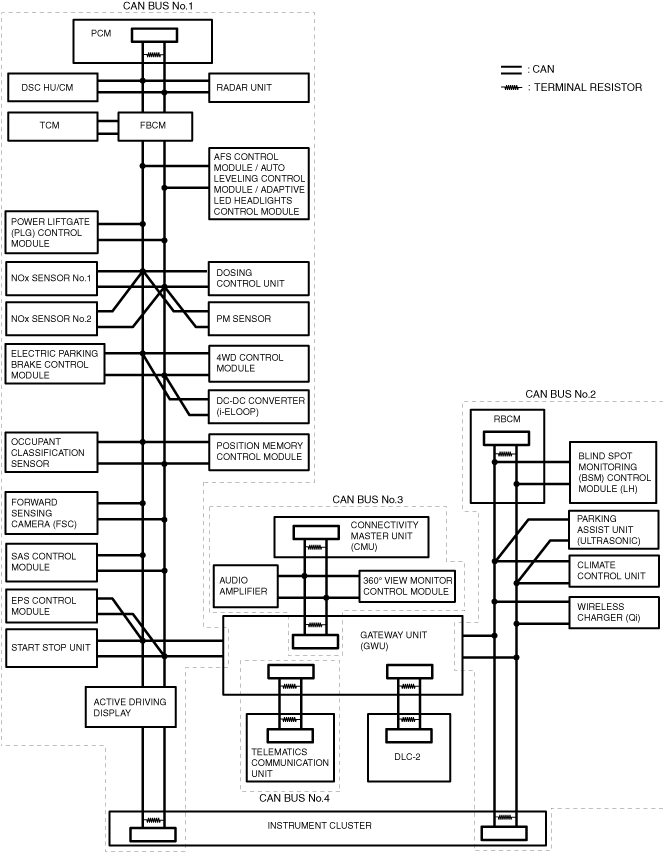Note
• It is necessary to select the CAN BUS to be diagnosed.Verify the module displayed in red (communication disabled) or blue (communication disabled or module not installed) from the network view on the M-MDS, and select any one CAN BUS between No.1 to 4.
CAN topology
ac5wzw00014758
|
